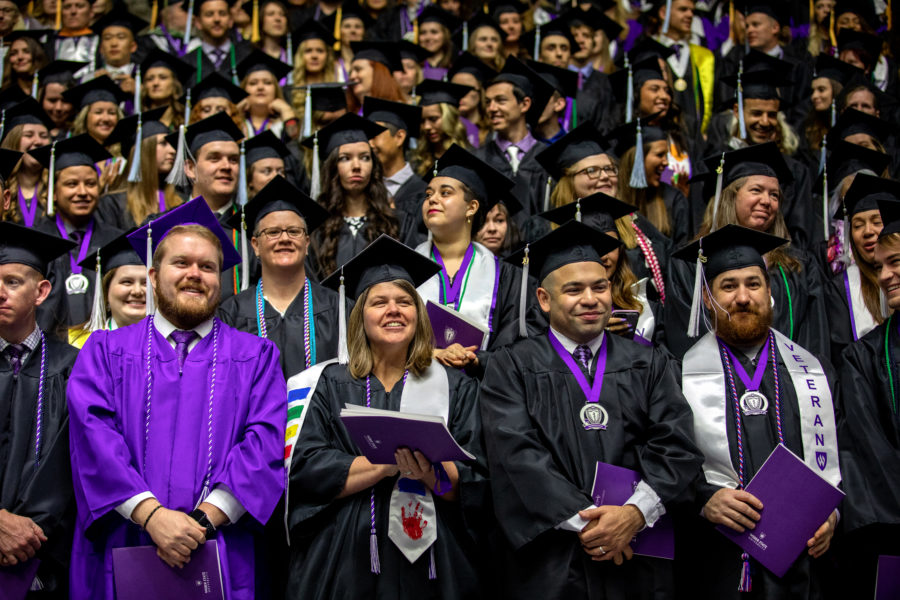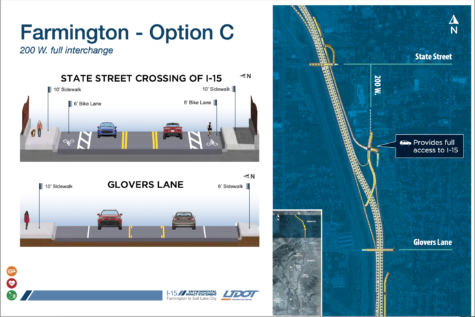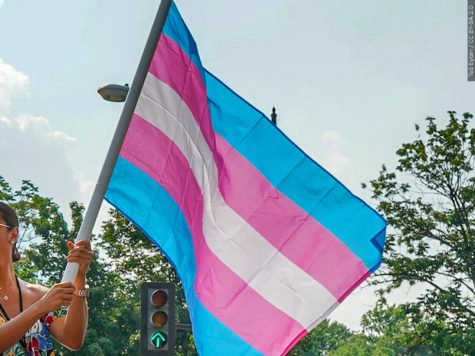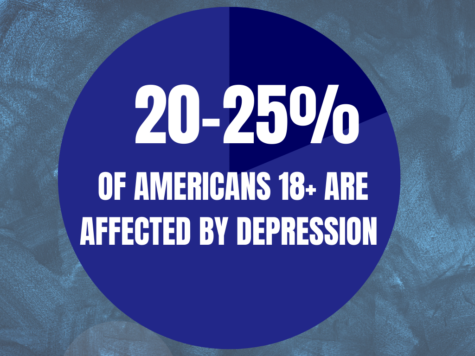The gender shift in education
The passing of Title IX in 1972 has changed the way higher education treats women and since, women have passed men in graduation rates.
Title IX protects against sex-based discrimination based in education. Since the landmark legislation, women have been outperforming men in every level of education, including earning higher GPAs in K-12 and graduating at higher rates than men with a bachelor’s degree or higher.
According to the Pew Research Center, in 1972, 12.4% of women and 25% of men graduated with a bachelor’s degree. By 2021, both genders had seen an impressive increase, except women now lead with 39.1% obtaining a bachelor’s degree or higher, while men trail behind with 36.6%.
After graduating high school in 2003, Kevin Wilson skipped college in favor of work experience. Wilson is not surprised by the strides women have made in education.
“I would assume the number of men graduating as opposed to those who proceed directly into the workforce has not changed much,” Wilson said. “The number of women receiving support and encouragement from their friends and family, as well as the community, has greatly increased in the last few decades.”
Scholarships.com is a website that offers information on scholarships for students. The website is organized into scholarships offered by gender, ethnicity and state.
The number of scholarships and support for women is not an issue for Wilson, who said some men might feel threatened with the number of scholarships and support women have over men, so they choose not to go to school.
“But also more, such as me, choosing the real-world experience over paying for someone else’s,” Wilson said.
Wilson views college degrees as a “pay to play” system and values work experience over a degree.
“I think being around the idiot with a degree too often in my line of work has jaded me,” Wilson said.
“College degree attainment gap is just one symptom of a large and growing gender gap in education,” Richard Reeves, author of “Of Boys to Men,” is a father of three boys. In his book, Reeves states.
In 2021, the Department of Education provided a document to assist educational institutions, who receive federal financial assistance, with meeting their civil rights obligations under Title IX. The document warns schools they “may never rely on overbroad generalizations about the different talents, capacities, or preferences of males and females.”
Reeves believes there should be reformation in both the workforce and educational institutions to promote equal opportunities between sexes.
“We can hold two thoughts in our head at once. We can be passionate about women’s rights and compassionate toward vulnerable boys and men,” Reeves said.
While universities across the country face a decrease in male enrollment, Utah universities face a different problem.
In 2019, Utah ranked No. 44 in graduation rates for four-year public institutions and No. 46 for retention rates in four-year-institutions.
Weber State University has an average 12% gap in graduation rates by gender. There is a 39% for women and 27% for men in six years. Statewide, those numbers are much closer at a 7% gap favoring women according to a Utah audit legislative report.
“The state is very concerned about one group of students, and those are ‘Some college, no degree,’” Eric Amsel, an associate provost at WSU and professor of psychology, said. “They started, but didn’t finish.”
Utah traditionally sees that problem more among women than men, Amsel said.
“I think there was a sense that there are a lot of women in that group who left higher education, to start families and have not gone back and that is some of the concern statewide,” Amsel said. “We have found something quite different at Weber State, which was a higher graduation rate for women compared to men.”
Named Utah Professor of the Year in 2006, Amsel spends a lot of time finding ways to make Weber State a place where all students can find a pathway to success.
“I do understand that there is an issue with men, but I’m not sure they’re not going to college,” Amsel said. “I think maybe they’re not completing college. Preferring perhaps getting to a point where they can find work. And having the degree doesn’t really change that.”
While male enrollment may not be as big a concern in Utah, the nation is already seeing the repercussions of the lack of male enrollment.
67% of students at Vassar College in New York are female. To bring male enrollment up, they have increased male acceptance rates.
According to Reeves, colleges across the country are trending toward this. On average, admission rates for men are 5% higher than for women.
The economy also plays a role in the deciding factor of attending college.
“One thing we know is that when unemployment increases, attendance in college increases,” Amsel said.
U.S. Unemployment Rate is currently at 3.5%. This is considerably lower than the long-term average of 5.73%.
For people like Wilson, who rely on work experience to move up in their job, this is good news. For people who don’t have work experience, Amsel hopes WSU can be a pathway for them.
“We want Weber to be a place for all students to come and find the pathway to what’s important to them. If that’s a certificate, that’s fine,” Amsel said. “I think we’re committed to meeting students where they are and trying to figure out a program that meets them where they are, rather than insisting that they meet us where we are,”
Scholarships, such as Catapult, are designed specifically for more advanced students to finish. For Amsel, supporting students is the priority.
“Do I think higher education has its purpose? Absolutely,” Wilson said. “Someone like a doctor should have a lot more schooling. I will consider going to college if it will help that last little bit into the management of the department, as some people still value that piece of paper over real-world experience.”



















